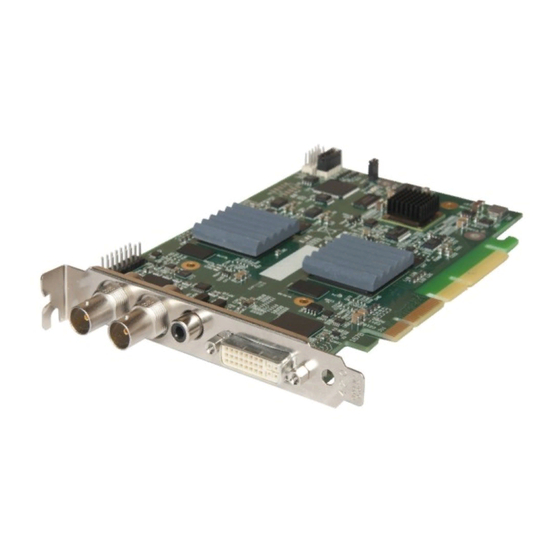Datapath The VisionAV-SDI 사용자 설명서 - 페이지 12
{카테고리_이름} Datapath The VisionAV-SDI에 대한 사용자 설명서을 온라인으로 검색하거나 PDF를 다운로드하세요. Datapath The VisionAV-SDI 14 페이지. Three channel audio and video capture card
Datapath The VisionAV-SDI에 대해서도 마찬가지입니다: 매뉴얼 (2 페이지)

Application Overview
The application displays the connected source in a window; it has the following features:
• Scales the data to fit in the window
• Ability to set up sources accurately (settings automatically saved)
• Save a single frame to a file in one of the following formats:
BMP, JPEG, GIF, TIFF, PNG
• Print a single frame
• Maintain the aspect ratio of the displayed captured data
• Cropping
• Display text over the data (on-screen display)
• Command line interface
• Help file documenting all features
Note:
The supplied drivers and software require that you are using:
• Windows® XP, Windows® Vista, Windows® Server 2003, Windows® Server 2008 or Windows® 7
(x86 and x64 Operating Systems) or Linux (audio not supported)
• CD / DVD ROM Drive
Using the card with other Datapath products
The VisionAV-SDI captures data and stores it in an on-board video buffer. This data is then copied using
DMA to the host system for display, storage or streaming.
When a Datapath graphics card is used, VisionAV-SDI transfers the data directly to the graphics card
thereby increasing performance. The VisionAV-SDI sends the relevant portions of each captured image
to each display channel and instructs each channel to use its graphics engine to render the data. This fully
utilises the hardware and dramatically increases performance.
When a Direct3D compatible graphics card is used the data can be transferred direct to the graphics card
in a similar manner to the Datapath graphics card with the same benefit of non-tearing captures.
When the data is displayed on a non Datapath graphics card, the VisionAV-SDI sends the data to system
memory or direct to the graphics card, dependant on the software used for display.
10
